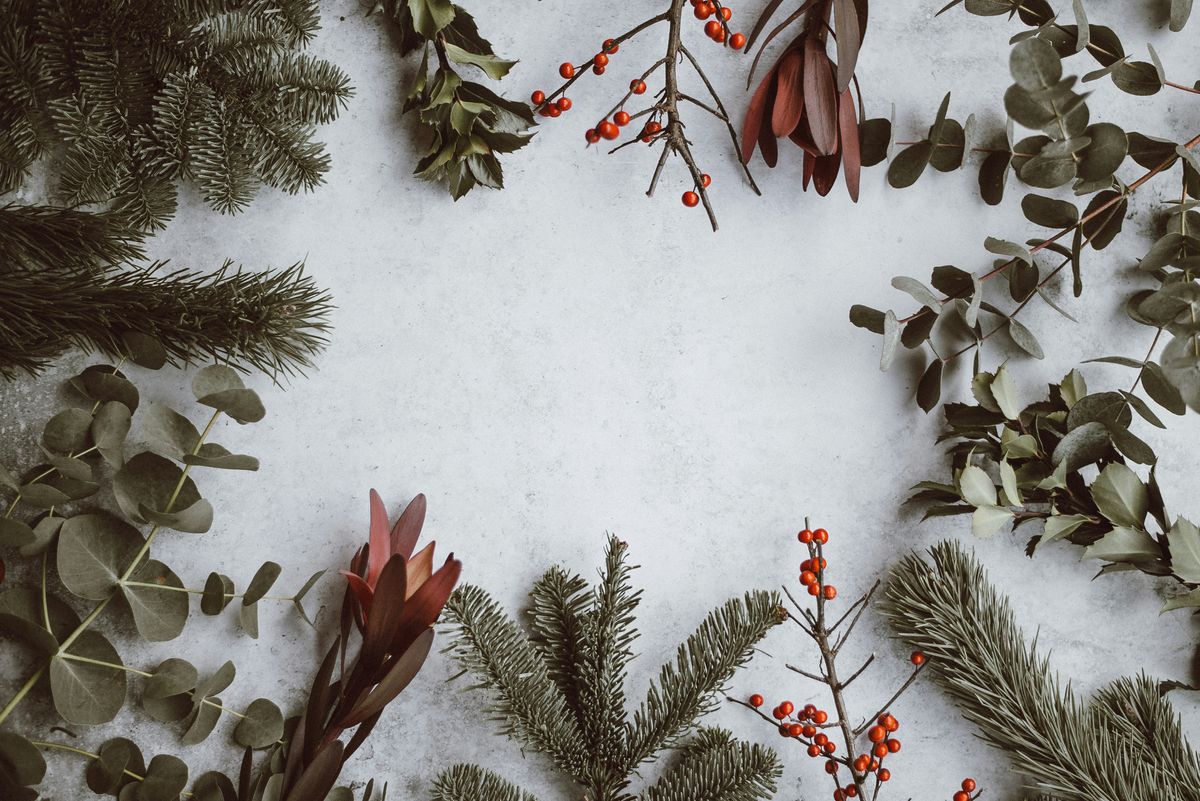Christmas palms, with their vibrant red fruits and elegant fronds, are a stunning addition to any tropical landscape. To ensure your Christmas palm thrives all year round, it’s essential to provide the right care and attention. From choosing the perfect location to controlling pests, here are key takeaways to keep your tropical beauty flourishing.
Key Takeaways
- Select a sunny location with well-draining soil for optimal growth.
- Water your Christmas palm regularly, but avoid overwatering to prevent root rot.
- Use a balanced fertilizer specifically formulated for palm trees.
- Prune your Christmas palm in late winter or early spring to maintain its shape and health.
- Keep an eye out for common pests like spider mites and scale insects, and use natural remedies to control infestations.
Getting Started

Choosing the Right Location
Finding the perfect spot for your Christmas Palm is crucial for its growth and health. Choose a location that receives ample sunlight throughout the day, ideally between 6 to 8 hours. This will ensure your palm gets the energy it needs to thrive.
When considering soil conditions, the Christmas Palm is quite adaptable. It can tolerate a range of soil types, from clay to loam and even sandy soils. The key is to ensure that the soil provides good drainage to prevent root rot. Here’s a quick checklist for soil suitability:
- Well-draining soil
- Tolerates clay, loam, and sand
- Avoid waterlogged areas
Remember, the right location isn’t just about the physical environment. It’s also about creating a space where your palm can become a part of your lifestyle, enhancing your garden’s ambiance and your overall well-being.
Planting Tips
Once you’ve found the perfect spot for your Christmas Palm, it’s time to get your hands dirty! Planting your palm correctly is crucial for its long-term health and beauty. Start by digging a hole that’s twice as wide as the root ball but no deeper. This gives the roots plenty of room to spread out without suffocating them.
When placing your palm in the hole, make sure the top of the root ball is level with the surrounding soil. Backfill the hole with a mixture of native soil and compost, which will provide nutrients and enhance drainage. Water thoroughly after planting to settle the soil and eliminate air pockets.
To enhance your landscaping, consider adding rocks around downspouts near your palm. Not only does this add an aesthetic touch, but it also helps prevent mulch erosion. Here’s a quick rundown of the pros and cons:
- Pros: Adds visual interest, helps with water management
- Cons: Can be costly, requires maintenance
Remember, the Christmas Palm thrives in bright, indirect sunlight. Avoid placing it in direct southern exposure, as this can lead to slow and weak growth. With these tips in mind, your palm is set for success!
Watering Schedule
Getting the watering schedule right is crucial for your Christmas Palm to flourish. Drooping leaves signal thirst; it’s a telltale sign that your tropical beauty needs a drink. A good rule of thumb is to water when the top inch of soil feels dry to the touch. But remember, the needs of your palm will change with the seasons.
During the hot summer months, your Christmas Palm will likely require more frequent watering. Conversely, in the cooler winter season, you can ease up as the plant’s water requirements diminish. To ensure your palm gets just the right amount, consider the following guidelines:
- Summer: Water 2-3 times a week
- Winter: Water once every 2 weeks
Always aim for deep watering rather than frequent shallow sprinkles. This encourages the roots to grow deeper, which in turn helps the palm withstand drought better. And don’t forget about proper drainage! Waterlogged soil can lead to root rot, which is a surefire way to jeopardize your palm’s health.
Fertilizing Tips

Choosing the Right Fertilizer
When it comes to keeping your Christmas Palm looking lush, choosing the right fertilizer is crucial. Palms have specific nutritional needs that differ from other plants in your garden. They require a balanced mix of nutrients, including nitrogen, potassium, and magnesium.
Here’s a quick guide to the essential nutrients your Christmas Palm craves:
- Nitrogen (N): Promotes healthy leaf growth.
- Potassium (K): Essential for overall plant health and disease resistance.
- Magnesium (Mg): Vital for chlorophyll production and deep green foliage.
Remember, the key is to fertilize, but don’t over-fertilize. Excessive feeding can lead to nutrient burn, which can damage your palm. It’s best to use a slow-release fertilizer that can nourish the plant over time. This way, your palm gets a steady supply of nutrients without the risk of overfeeding.
Application Techniques
Once you’ve selected the perfect fertilizer for your Christmas Palm, applying it correctly is crucial for optimal growth. Spread the fertilizer evenly around the base of the palm, avoiding direct contact with the trunk to prevent burn. A light hand is better than overdoing it; you can always add more if needed.
Here’s a quick rundown on application frequency:
- Spring: Kickstart the growing season with a generous application.
- Summer: Support growth with regular, lighter applications.
- Fall: Reduce frequency as growth slows down.
- Winter: Hold off on fertilizing as the palm is likely dormant.
Remember, the specific needs of your Christmas Palm can vary based on the environment and soil conditions. If you’re unsure, it’s always a good idea to consult with a local expert or refer to a variety of articles on DIY, home decor, gardening, and food/drink topics for additional guidance. And don’t forget, maintaining the health of your palm is like ensuring the longevity and safety of a roof; regular care, prompt attention to issues, and professional advice when needed can keep your tropical beauty thriving for years to come.
Pruning and Trimming

When to Prune
Knowing when to prune your Christmas Palm is crucial for maintaining its health and aesthetic appeal. Generally, the best time to prune is during the palm’s slower growth period, which is typically in the early spring or late fall. This timing allows the palm to recover and flourish during its active growing seasons.
Here’s a quick guide to help you remember:
- Early Spring: Remove any frost damage from winter.
- Late Fall: Clean up before the winter, remove any dead or dying fronds.
Always use clean, sharp tools to avoid damaging the palm and to ensure a clean cut. Pruning during the correct time of year will keep your Christmas Palm looking tidy and can prevent potential issues related to overgrowth and disease.
Trimming Tips
Keeping your Christmas Palm looking its best requires a little bit of TLC when it comes to trimming. Don’t wait for your palm to self-prune; instead, take the initiative to remove old or dead fronds. This not only tidies up the appearance but also encourages healthier growth.
Here’s a quick checklist to ensure you’re doing it right:
- Always use clean, sharp tools to prevent damage and disease.
- Trim fronds that are completely brown or hanging low.
- Avoid over-trimming; palms store nutrients in their fronds.
- Dispose of the trimmings properly to avoid attracting pests.
Remember, regular cleaning and preventive measures can go a long way in maintaining the health and beauty of your Christmas Palm. Just like a showerhead benefits from a vinegar solution to prevent clogs, your palm benefits from consistent care to prevent issues.
Pest Control

Identifying Common Pests
Keeping your Christmas Palm free from pests is crucial for its health and beauty. Identifying common pests early can save you a lot of trouble down the line. Here’s a quick rundown of the usual suspects:
- Spider mites: These tiny critters can cause yellowing and wilting. They love dry conditions, so maintaining humidity can help keep them at bay.
- Scale insects: Look for small bumps on leaves and stems. They suck the sap and weaken the plant.
- Mealybugs: These white, cottony pests cluster in leaf axils and on the underside of leaves.
Each pest has its own telltale signs, much like the symptoms of palm tree diseases. For instance, spider mites often leave fine webs, similar to those you’d find in an old attic. Scale insects, on the other hand, give the plant a bumpy texture. Mealybugs are perhaps the easiest to spot with their distinctive white fluff. It’s important to inspect your palm regularly, as early detection is key to prevention and control, echoing the advice from the guide on palm tree diseases.
Natural Remedies
When it comes to keeping your Christmas Palm free from pests, natural remedies can be incredibly effective. These solutions not only help in maintaining the health of your palm but also ensure a safe environment for pets and children who might roam around the garden.
For starters, a simple mixture of water and mild soap can do wonders against spider mites and aphids. Just spray it directly onto the affected areas. If you’re dealing with mealybugs, alcohol swabs can be your weapon of choice, as they’re great for spot treatments. For a broader approach, neem oil is a go-to for many gardeners; it’s a natural insecticide that can tackle a variety of pests without harming beneficial insects.
Here’s a quick guide to some common natural remedies:
- Soap and Water Spray: Effective for spider mites and aphids.
- Alcohol Swabs: Ideal for treating mealybugs.
- Neem Oil: A versatile option for various pests.
- Insecticidal Soap: Can be used for a range of insects.
Remember, consistency is key with these treatments. Regular checks and prompt action can keep your Christmas Palm looking its best!
Frequently Asked Questions
How often should I water my Christmas Palm tree?
It is recommended to water your Christmas Palm tree once a week, ensuring that the soil is moist but not waterlogged.
What is the best location for my Christmas Palm tree?
Choose a location that receives partial to full sunlight, as Christmas Palm trees thrive in bright, indirect light.
When is the best time to fertilize my Christmas Palm tree?
Fertilize your Christmas Palm tree in the spring and summer months, using a balanced fertilizer specifically formulated for palm trees.
How do I identify common pests that may affect my Christmas Palm tree?
Look out for signs of spider mites, mealybugs, and scale insects on the leaves and trunk of your Christmas Palm tree.
Can I trim my Christmas Palm tree to control its height?
Yes, you can trim the top of your Christmas Palm tree to control its height, but avoid excessive pruning as it may harm the tree.
Are there any natural remedies for pest control on Christmas Palm trees?
Yes, you can use neem oil, insecticidal soap, or a mixture of water and dish soap as natural remedies to control pests on your Christmas Palm tree.
